Separating fact from fiction can be difficult regardless of what the subject matter is. If you believe something, then you believe it! It’s as simple as that. You may have even forgotten what source you’ve heard something from, but as long as it seems “right” in your head, it’s natural that you’ll see it as truth until proven otherwise. Misinformation and old wive’s tales are constantly being passed around, and can easily get muddled up with whats true.
Chances are you’ve read or been involved in a debate or discussion about the guitar where two sides believe entirely different things. Or, maybe you’ve just heard something that seems a little hard to believe. Below I’ll list a few common myths surrounding the guitar, and my reasons for debunking them. Let me know if you agree or disagree with any of them in the comments!
1. It’s bad for your guitar to remove all the strings at the same time when re-stringing your guitar.
When you take your guitar to a tech or a luthier for any sort of fret work, they’re most likely going to be taking all the strings off to grant themselves proper access to the frets. As long as the string tension is reduced gradually, then there’s nothing wrong with taking all the strings off at the same time. What you want to avoid is cutting the strings while they are still tuned to pitch – the drastic drop in tension could potentially cause harm. Also, if your guitar has a floating bridge, you will actually save yourself time by re-stringing it one string at a time. Maintaining as much tension as you can during the re-string process will make it easier to balance the spring tension afterwards, if you even need to.
2. “My guitar has a bad hum, and when I touch the strings / bridge / metal knobs it goes away. It must not be grounded properly!”
I hear this one all the time. Naturally, one would assume that your body is acting as a ground, soaking up that hum when touching these components. The thing that seems to be forgotten is that your body naturally creates electricity. If you had an improper or reversed ground, touching anything metal on the guitar would actually just cause your body’s electrical noise to be amplified, thus increasing that nauseating buzz sound. If the hum gets quieter when touching metal guitar components, it’s actually a sign that your guitar is grounded properly.
Pretty much every guitar has some sort of 60 cycle hum that is more evident at higher volumes. If you find a guitar that seems to have a worse buzz than another one, it is likely due to a problem with shielding rather than grounding. It is actually amplifying electrical noises from outside the guitar’s circuit. There are things you can do to help with shielding problems such as using higher quality cabling, better pots and wiring, or even rimming the electronics compartment with tin foil – but at the end of the day, you will most likely never quite get rid of that noise entirely. It just comes with the territory!
3. Playing an un-grounded guitar is extremely dangerous!
Well, maybe for your ears it is. The amount of amperage an electric guitar produces simply isn’t enough to be lethal, or even cause any harm. What you need to be wary of is your amplifier, and the source you are plugging it into. People have literally died in the past from amplifiers that were not properly grounded. So if you notice a shock when you touch your strings, or when your lips touch the microphone while playing, it might be a good idea to get your amp and wall outlet checked out!
4. “Your tune-o-matic bridge is on backwards.”
This is a common issue you’ll find players debating. When you look at a tune-o-matic bridge, the intonation adjustment screws are on one side only. The argument is always over which side these should be facing for the bridge to be on “properly”. Quite frankly, it doesn’t matter. There is no universal right or wrong direction for the bridge to be on; it should be placed in the direction that makes the most sense for the particular guitar it is on. For example, if your bridge happens to be located really close to your bridge pickup, and you like your bridge pickup to sit rather close to the strings, it might be in your best interest to have the intonation adjustment screws facing the tail of the guitar. That way it’s not impossible to intonate.
Many tune-o-matic bridges feature 3 saddles facing one direction, while the other three face the opposite way. Others feature saddles all angled the same direction. Here’s a quick doodle I did to help picture a saddle from the side:
Consider this: depending on the break-angle of the string, it may be best to have the intonation screws facing the pickups as shown here. In rare occasions the break is so great that the string makes contact with the screw, which is of course not something you want.
Also in the diagram, you can see that the string rests on the saddle at its leftmost side. This means you have more room to shorten the string than you do to lengthen it. If your E string’s saddle is facing this way, for example, and it consistently intonates too sharp (even with the saddle pushed all the way to the right), consider flipping the bridge or saddles. With the saddles facing the opposite direction, this will give you almost an entire saddle’s length extra to lengthen the string!
5. A Nitro-finished electric guitar sounds better than a poly-finished one.
To me, this is just a similar argument to “a les paul sounds better than a strat”. It’s entirely subjective. Is there even a difference? I don’t know, I’ve never A-B’d two identical guitars that had the same weight, wood, shape, and electronics, but one had a nitro finish and the other had poly. Some would argue that poly “chokes” the resonance of the guitar more than nitro does, therefore making for an inferior sounding instrument. I can see such an argument holding more water for an acoustic guitar – these are entirely dependent upon their wood and the way it vibrates. That said, I’m not really convinced that a slightly thicker compound would ruin the tone of an electric guitar. Sure, the finish might look, feel, and age differently, but I’m not going to squander the opportunity to try out a potentially great sounding guitar just because of its finish. If I play a guitar and like how it sounds, then it sounds good. That’s my criteria, anyway…
6. You need to have natural talent to become a “guitar god”.
I find that this would be almost insulting to every “guitar god” out there. It’s as if to say they inherited their talent rather than worked for it, when in fact these musicians worked very hard to be able to do what they do. It’s true that if you’re brought up on music, then maybe you’ll have a bit of a knack for it when you decide to start playing an instrument – but it still requires a lot of dedication and practise. If anything, it could be argued that you need good people/business skills coupled with skill and ability to become a “guitar god”. There are and have been TONS of incredible guitar players out there that we’ve probably never heard of because in the music business, there’s more to it than just being “really really good”.
7. You need to practise for several hours each day to become a good player.
To this I say: quality over quantity. You could practise for 8 hours a day and go nowhere if you aren’t being productive about it. Without proper instruction, research, and practise, you can easily end up developing bad habits that hinder your overall playing, or just spend too much time on something that isn’t helping you. Thirty minutes to an hour of focused, co-ordinated practise is more than enough to keep you on track and on your way to becoming a good guitarist. Private lessons are also a great way to help you establish a good practise routine.
8. You need a 100 watt stack amp if you want to play in a loud rock band.
Unless you plan on playing in a sold out arena or stadium some time soon, then you really don’t need that much power. Keep this in mind: twice as much wattage is not synonymous with twice as much volume. It actually takes ten times the output power to effectively double the human ear’s perception of volume. In other words, if you were thinking of getting an amp that could be twice as loud as a 50 watt, you would need a 500 watt – not a 100.
If the typical venue you’ll be playing in is a bar, or a small theater, you probably won’t be able to set your 100 watt amp’s level too high before your bandmates (and the sound technician) are screaming at you to turn down. The problem is, in order to get the best tone out of your amp, normally you need to run it pretty hot. Using a 30 – 50 watt amp is more than enough to allow you to play at a good level and achieve the tone you want for a decent sized venue. Not to mention you can easily get mic’d up and run through the sound board for a better control over the mix!
9. The fatter the string, the better the tone.
Once again, we have a subjective statement. To me, this phrase should be “the fatter the string, the different the tone”. Artists like Stevie Ray Vaughan and Zak Wylde have been known for creating unbelievable tones using their super thick gauge strings. That’s a fact; these are two incredible, individual guitar tones that are “owned” by these two artists. That said, there are other guitarists who have created super heavy sounds using thin strings. James Hetfield? .009. Eddie Van Halen? Also .009. Jimmy Page? He prefers .008! My advice: use what feels and sounds good to you.
10. If it’s not “brand name”, it’s crap.
I think this is society’s fault. We feel this way about everything… Going for a run? Get a pair of Nike’s! Want to go for a coffee? Only if it’s Starbucks! Name two good guitar brands… I bet you just thought of two words that rhyme with “blender” and “bibson”.
That’s not to say that these brands aren’t good – many of the guitars they make are! They’re the big guys who have stood the test of time, and they’ve done so for a reason. Partially because they started off with a great product, and partially because of advertising and word of mouth. What you need to remember though is that just because it has the name on the headstock, that doesn’t make it good. These brands make various quality levels of instruments, and while their higher-end stuff might be fantastic, their lower end guitars really aren’t any different from others at the same price-point. You could take two of the exact same model guitar priced at, say, $700 and one could be incredible, and the other a dud – especially when coming from such large, mass production facilities.
The best coffee I’ve ever had is from a small, family-run restaurant near my hometown. Not a Starbucks. In my opinion, the best guitar you’ll ever play could be one built by a local luthier specifically for you. That doesn’t sound like crap to me!

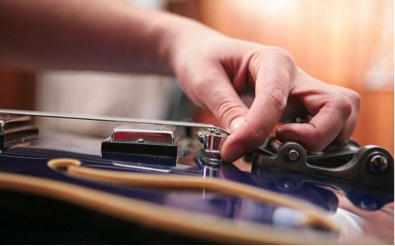
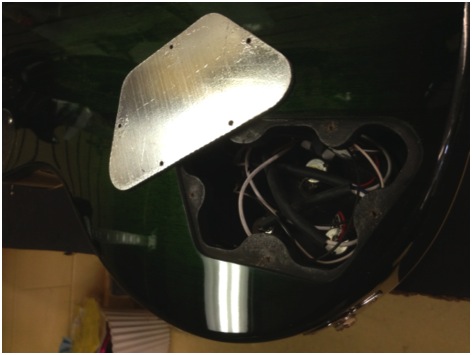
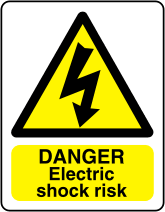
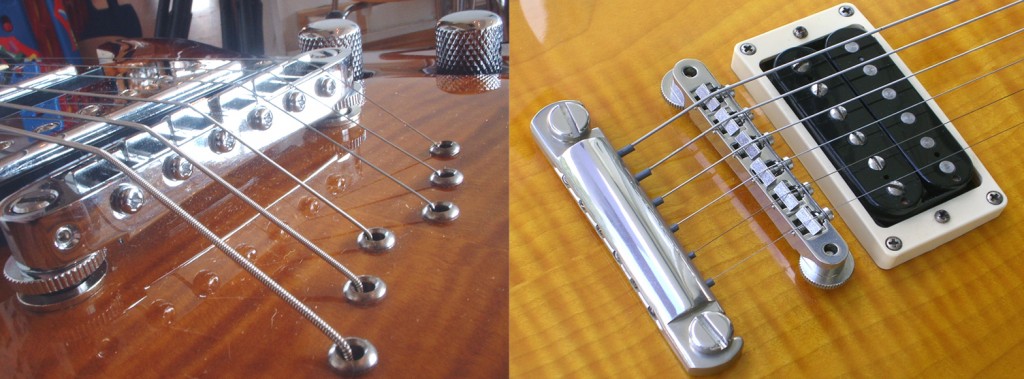


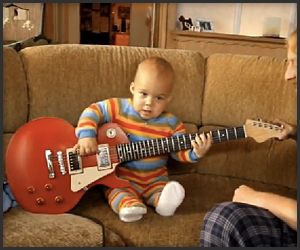
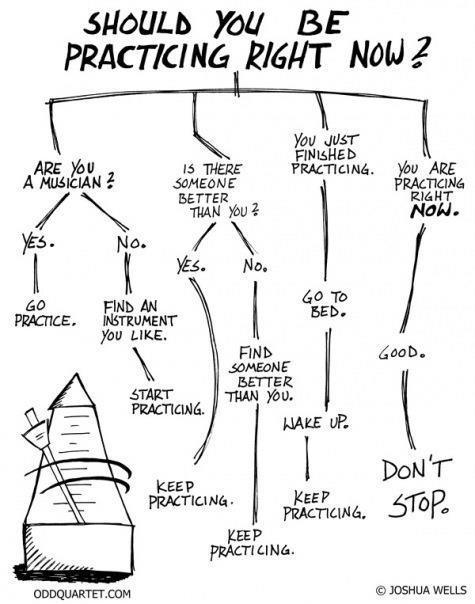

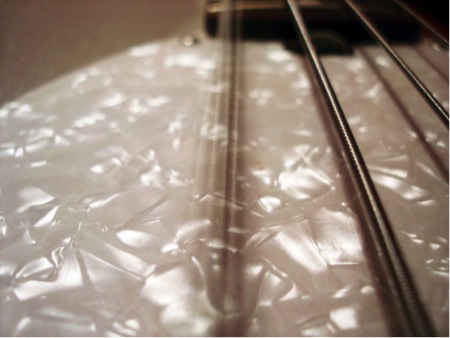

I agree on a LOT of this, but mostly on #10. Some of the best guitars I own are NOT even names on that list. I play two 70’s Cort’s, a mid 90’s Springfield, a low end Fender acoustic and an 86 Epiphone Firebird. Replaced the electronics and the guitars will stand up to the guitars I have that ARE names on that list.
You just have to be able to tweak what you have. I highly recommend learning how to solder and would recommend using the wiring diagrams available online. Great article.
Ha, very interesting. I guess the 7th myth is relatable to me. I’m busy so I don’t have much time to practice guitar but I always try to practice daily and make the best of it. Thanks for the great post!
I’m really enjoying my Sunburst Sidejack 12. I also enjoy reading these articles, but may I make a suggestion? As may be the case with many of my fellow Boomers, I find that the font used is rather anemic and reading the article causes a bit of eye strain. Would it be possible to use a beefier font…not necessarily bigger, but a bit bolder and easier to see? Thanks for your consideration. Rock on!
Regarding string gauges, I recall Billy Gibbons discussing this with B.B. King and billy was saying you need bigger strings to get a better sound. B.B. (who uses light gauge) replied “I just turn the amp up.”
I have lived by his words!
Totally agree with these, particularly 5 and 9, especially when dealing with solid body electrics.
You are real breath of fresh air…Total common sense all the way around…BTW on a bass, I’ve found to not reduce all tension on the strings to adjust the truss rod,..Kick ’em back about a half step, Flex the neck back by the headstock if your reducing bow to take the pressure off & tighten the nut. taking all the tension off the strings confuses the neck & I’ve never run into a truss rod that couldn’t take it if you do quarter turns…
Great list, thank you for your insight. After seeing the practice chart, I had to buy a T-shirt form “Odd Quartet.”
Great article, since I started building my own guitars, I realized that a lot of what you are saying is true. Before that I would have argued with you till the cows came. So good stuff, thanks.
Nice job. Learned a bunch.
Yes, and supposedly Billy Gibbons uses .007’s on all his guitars except for the Les Pual that he plays slide on – it has .008’s. 😉
I have a Yamaha red label acoustic that I bought in 1969 and I would not trade it for any Martin, Gibson, Fender, etc…I also have a Takamine electric in the explorer style that was my only electric for 25 years while playing in a money making band. I have never been one for name brand, if it felt good in my hands and sounded good, I played it. In the first band I ever played in, that was in junior high, I played a Teisco Del Ray and it sounded as good as any guitar that was in the band. I was told once, ” its not the car, it’s the driver”, and I’ve held onto that moto for all my life.
Re: string thickness. While I agree that with the right amp, pedals, and talent, you can get “big” sounds from an electric guitar regardless of string gauge. However, I believe it’s quite different on acoustics.
Do you really want .009’s on a Martin D-45? Your tone will be thin, and your volume greatly reduced.
For me, .012’s are really the smallest gauge to make an acoustic sound reasonably like it should (unless you have a pickup and are being heard through an amp or PA, in which case the electronics are creating much of the sound)
A few years ago I went to .013’s on all my non 12-string acoustics. What a difference! So much more volume, resonance, and projection. We’re talking night and day. Give it a try. Work up to it in steps of .001 if your calluses aren’t built up enough to start with.
Well done. Love the diagram!
Great stuff as always Mike. I just picked up a $20 Fender Squire special at a yard sale last week with a Tune-O Matic bridge. Need’s some work. Invested in a $70 small fender Amp and once I have it working will donate it and the Amp along with all the fixins to some deserving kid here in Lowell. Thanks for the ideas on the bridge.
I was getting ready to have an issue with #9, but you pretty much nailed it on the head. Thicker strings (I use Slinky Heavy Bottom) sound and feel better TO ME, but different strokes… I do like how they seem to stay in tune better, though.
You left off that tone wood is BBBBSSSSSS
#5 and 9, dead on! It has been my experience that the tone of an electric guitar, especially when played with distortion, is almost exclusively due to the combination of amp, pick ups and player style. String gauge is more important to the feel of the guitar than tone, and as for finish I’ve never noticed and real discernible difference.
I am 72 and still doing original material.
Facts- some guys do zip are a natural genius and play amazing. Some guys have close to a tin ear and cannot copy a tune by ear. They end up creating their own style and in the process reinvent what can be done on the guitar…they practice for hours everyday not only trying to improve their technique but adding ever more unique ideas to their style.
these guys become the real greats because they sound totally original.Some guys spend forever practicing and taking lessons.they are greatly admired and respected.But they are never original because they know all the rules.
they would never be a Van Halen because how to do what he did was not in a book. lol
Guitars are made of wood. Trees are stupid things they often do not know any better then to end up in a cheap guitar.If the wood is good all else can be fixed or replaced.
Keep playing until you die.Shoot for the moon!!! You only have to hit it once!!so it isalways worth another shot!
No mention of the advertising that highlights the type of wood used in a solid body guitar as though it’s significant. A very well known player of bass and guitar who will remain nameless but would be recognized by all from a very long career in playing and recording told me what nonsense that is. With solid body, it’s all in the electronics. After all, Les Paul build his first solid body guitar from a railroad tie. If you are talking acoustic, wood matters. Martins are generally great, but having a reputed luthier build one for you might be the best way to go…even from a Martin kit! But for solid body electric guitars it hardly matters.
Regarding finishes, it may not be the material but, rather, how it is applied. Poly finishes became popular with manufacturers in part because they are easy to apply – in some cases the body is simply dipped in a vat of poly, resulting in a thick coat. My favorite, and best sounding, acoustic is a parlor guitar made by Vancouver luthier David Webber, who applies and sands multiple layers of poly, resulting in a thin but durable finish on a guitar that, most importantly, sounds and plays wonderfully.
1. Brand names don’t make the guitar great. I have two Eastman acoustics and two Heritage electrics. Both are great guitars.
2. I agree about strings. Sound is purely subjective.
3. You don’t inherit talent! The best guitar player I know, who like me is a senior citizen
and has played professionally for 50 years,became great through self study and practice. He now teaches and is a recognized national authority as a top high school instructor in Las Vegas.